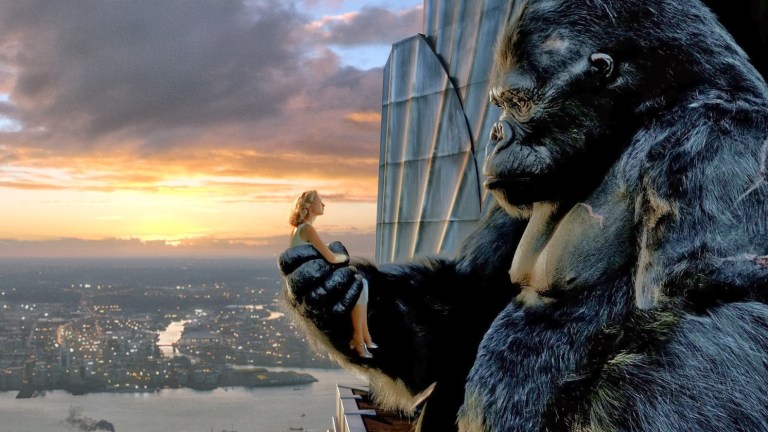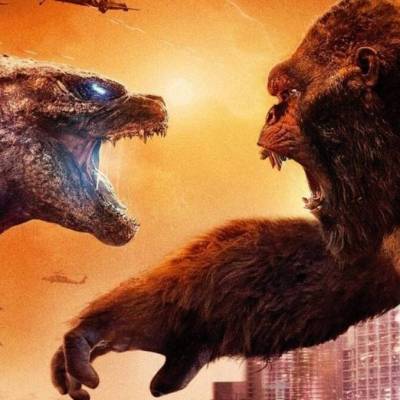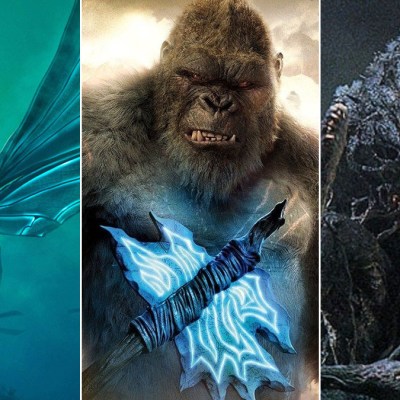Godzilla vs. Kong Director Almost Made a Sequel to Peter Jackson’s King Kong
Godzilla vs. Kong director Adam Wingard remembers the King Kong sequel he was developing with Peter Jackson.

Director Peter Jackson’s 2005 version of King Kong is something of an anomaly: although the film was a box office hit—grossing $562 million worldwide against an admittedly hefty budget of $207 million—and garnered a generally positive critical response, it doesn’t seem to have made a lasting impression on the pop culture landscape in the same way that Jackson’s The Lord of the Rings trilogy did. In fact, in some quarters it’s considered an underperformer.
That, however, apparently didn’t stop Jackson from developing the idea for a sequel to his Kong movie, reportedly titled Skull Island. And while Jackson himself was not interested in directing the film, he did have someone in mind: Adam Wingard, the filmmaker who just helmed the recent indie horror hit You’re Next—and yes, the same Adam Wingard who has directed the newly released Godzilla vs. Kong.
Wingard revealed this information recently, and Den of Geek asked him for the story when we spoke recently during the promotional rounds for Godzilla vs. Kong. “You’re Next was about to come to the theaters and I had just wrapped photography on The Guest,” he says. “Mary Parent [who oversaw Jackson’s Kong at Universal and is a producer on all the current MonsterVerse films] comes to me with an art book from Skull Island as sort of a gift saying, ‘Peter Jackson just saw You’re Next. He’s interested in you and [Wingard’s writing partner] Simon Barrett developing a sequel to his film called Skull Island.’”
Wingard says that the proposed film “didn’t get quite far enough down the line where we got into the nitty-gritty details,” but recalls that Jackson was thinking of it as a sequel to King Kong set during World War 1—which would technically make it a prequel, since Jackson’s Kong was set during the Great Depression.
“I don’t think there was anything beyond that,” Wingard says now. “The feeling I got was that the studio wasn’t really that interested in doing a World War I film. But funnily enough, Simon and I have a World War I script that we’ve been working on. It’s one of our main passion projects over the years that we plan on doing at some point. So naturally we were like, ‘Well, we don’t want to do a King Kong World War I movie, because we have an actual World War I film. We would rather do it modern day.’”
Although Wingard says that he and Barrett had to pitch their idea to Universal execs, he can only summon up a few details about it now, eight years later.
“I remember Mary talking about my pitch for Skull Island, and she seemed to remember thinking it was great,” he explains. “I don’t remember it hardly at all. I remember a couple of details. It was modern day. There was some sort of opening scene where characters were in a museum and they’re talking. Then at the end of the scene, it’s revealed that the museum has these giant King Kong bones. He’s like this relic from the past and Skull Island is this sort of myth and nobody knows what happened to it. And somehow these characters are going back there.”
Wingard continues, “I remember there was this whole element of the island being cloaked somehow by some sort of technology. Those are the main things that I can remember. I don’t remember what the plot was going to be about. Simon might remember better. Somebody should ask him at some point, because I’d be curious myself.”
Although the project was eventually canceled at Universal, Wingard says it was still memorable because he and Barrett got the chance to communicate and talk shop with Peter Jackson and briefly (at that time) find themselves in the rarefied and often strange world of Hollywood tentpole filmmaking.
Wingard recalls, “The whole thing actually got real when Peter Jackson and Fran [Walsh, Jackson’s wife and producing partner] actually wrote Simon and I an email apologizing to us saying, ‘Hey, we’re really bummed out that this isn’t going to happen. It’s out of our hands. We’re off the film. It’s a real bummer, because we were really looking forward to making this our next movie and we wanted it to be with you guys. Best of luck.’ It was only then that it really felt real, when it was over.”
But Wingard adds that his conversations with Jackson did yield some valuable insights which he carried into the making of Godzilla vs. Kong. “I remember talking to Peter Jackson and kind of mentioning, ‘Look, I don’t have any experience with VFX.’ The advice that he gave me was, ‘Don’t worry about it. Your job is just to dream these things up. These VFX animators are so talented. Anything that you can imagine, they can do.’
“That’s a good mentality to have when you’re working on a film with a huge budget and with great animators,” he continues. “It really is something that I took with me to [Godzilla vs. Kong] where I just said, ‘You know what? I might not understand the mechanics of every little bit how VFX is put together. That’s not my job. My job as a director is to dream big, think big and push everybody into just doing these insane, crazy ideas.’”
Although Jackson’s Skull Island is now nothing more than a lost project among many in filmmaking history, Kong himself eventually found his way from Universal to Warner Bros. Pictures and Legendary Entertainment, where he starred in the unrelated Kong: Skull Island in 2017. The film was explicitly linked to 2014’s Godzilla reboot in what has now come to be known as the Monsterverse, which eventually opened the door for Wingard to direct Godzilla vs. Kong.
“I got to make the movie I wanted to make ultimately,” he concludes about the long journey to this point. “And that’s more than some people are able to say.”
Godzilla vs. Kong is out now in theaters and streaming on HBO Max.


